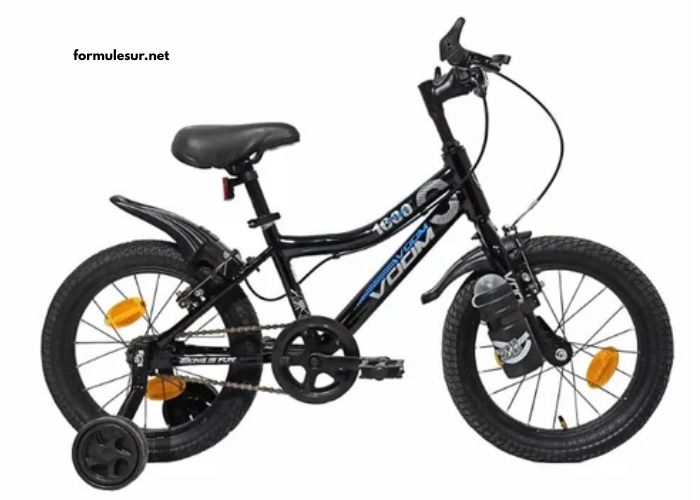Maintaining a healthy and active lifestyle is more than just a passing trend—it’s a lifelong commitment to physical, mental, and emotional well-being. In today’s fast-paced world, structured fitness routines have become essential to help individuals combat sedentary habits, manage stress, and lead more fulfilling lives.
This comprehensive guide dives into various fitness routines designed to support a healthy and active lifestyle, suitable for beginners and seasoned fitness enthusiasts alike. Let’s explore how you can build, maintain, and optimize a workout regimen that aligns with your personal goals.
Why Fitness Matters for a Healthy Life
Staying physically active is proven to reduce the risk of chronic diseases, improve mood, enhance sleep, and boost overall quality of life. Here’s why fitness should be a core component of your daily routine:
-
Improves Cardiovascular Health
-
Strengthens Muscles and Bones
-
Enhances Flexibility and Mobility
-
Reduces Anxiety and Depression
-
Boosts Immunity and Energy Levels
H2: Creating the Foundation – Assessing Your Fitness Goals
Before diving into a fitness routine, it’s important to define what you want to achieve.
H3: Common Fitness Goals Include
-
Weight Loss or Fat Reduction
-
Muscle Building or Toning
-
Improved Cardiovascular Endurance
-
Enhanced Flexibility and Balance
-
Stress Relief and Mental Clarity
Setting SMART (Specific, Measurable, Achievable, Relevant, Time-bound) goals will help you stay focused and motivated throughout your fitness journey.
H2: Components of a Balanced Fitness Routine
An effective fitness plan incorporates multiple elements to work different muscle groups, improve endurance, and prevent plateaus.
H3: 1. Cardiovascular Exercise
Cardio workouts help burn calories, strengthen your heart, and improve lung capacity.
Examples:
-
Running or Jogging
-
Cycling
-
Swimming
-
Jump Rope
-
Dancing or Zumba
Recommended Frequency:
3–5 times per week, 30–60 minutes per session.
H3: 2. Strength Training
Building muscle mass not only improves body composition but also supports metabolism and joint health.
Examples:
-
Bodyweight Exercises (push-ups, squats)
-
Weight Lifting
-
Resistance Bands
-
Kettlebell Workouts
Recommended Frequency:
2–4 times per week, targeting different muscle groups.
H3: 3. Flexibility and Mobility Training
These exercises enhance range of motion, reduce injury risk, and support posture.
Examples:
-
Yoga
-
Pilates
-
Static and Dynamic Stretching
-
Foam Rolling
Recommended Frequency:
Daily or at least after every workout.
H3: 4. Functional Training
This includes movements that mimic daily activities to improve coordination and balance.
Examples:
-
Lunges
-
Step-Ups
-
Medicine Ball Throws
-
Stability Ball Exercises
H2: Sample Weekly Fitness Routine (Beginner to Intermediate)
Here’s a balanced weekly workout plan to maintain a healthy and active lifestyle:
H3: Monday – Full-Body Strength + Light Cardio
-
Bodyweight squats – 3 sets of 12 reps
-
Push-ups – 3 sets of 10 reps
-
Dumbbell rows – 3 sets of 12 reps
-
Brisk walk – 30 minutes
H3: Tuesday – Cardio Focus
-
30-minute run or cycle
-
10-minute core workout (planks, leg raises)
H3: Wednesday – Yoga or Flexibility Training
-
45-minute yoga session or full-body stretching
-
Deep breathing exercises
H3: Thursday – Upper Body Strength
-
Dumbbell bench press – 3 sets of 10
-
Shoulder press – 3 sets of 12
-
Triceps dips – 3 sets of 15
-
Rowing machine – 20 minutes
H3: Friday – HIIT (High-Intensity Interval Training)
-
20-minute HIIT (burpees, jump squats, mountain climbers)
-
10-minute cooldown and stretching
H3: Saturday – Active Rest Day
-
Leisure walk, light hike, or swimming
-
Stretching and foam rolling
H3: Sunday – Rest & Recovery
-
Full rest or light yoga
-
Hydration and proper nutrition
H2: Nutrition: The Companion to Fitness
Physical activity alone is not enough—what you eat significantly impacts your fitness results.
H3: Tips for Supporting Fitness with Nutrition
-
Eat Lean Proteins: Helps repair and build muscles post-workout.
-
Stay Hydrated: Dehydration affects performance and recovery.
-
Fuel Before Workouts: Include complex carbs and protein.
-
Recover with the Right Nutrients: Opt for a post-workout snack within 30–60 minutes.
-
Limit Processed Foods: Choose whole, nutrient-rich foods.
A certified nutritionist can help create a meal plan based on your fitness routine and personal health goals.
H2: Staying Motivated and Consistent
Motivation often fades, but habits sustain progress. Here are some ways to keep yourself accountable:
H3: 1. Track Your Progress
Use fitness apps or a journal to log workouts, track weight, and measure improvements.
H3: 2. Set Mini-Milestones
Break down your goals into short-term objectives for quick wins and encouragement.
H3: 3. Find a Workout Buddy
Exercising with a partner keeps you motivated and adds a social element to fitness.
H3: 4. Join Group Classes or Challenges
From boot camps to yoga sessions, group activities increase engagement and motivation.
H3: 5. Reward Yourself
Celebrate achievements with non-food rewards like a massage, new workout gear, or a day off.
H2: Tailoring Routines for Different Lifestyles
Fitness isn’t one-size-fits-all. Here’s how you can tailor workouts to fit your lifestyle:
H3: For Busy Professionals
-
20–30 minute home workouts
-
Lunchtime walks
-
HIIT or circuit training to maximize time
H3: For Seniors
-
Low-impact cardio (walking, swimming)
-
Chair yoga or gentle stretching
-
Light strength training for bone health
H3: For Students
-
Bodyweight exercises in dorm rooms
-
Fitness challenges with friends
-
Sports and recreational activities
H3: For Parents
-
Stroller workouts
-
Family yoga
-
Quick 15-minute routines during naptime
H2: Common Mistakes to Avoid in Fitness Routines
To maintain safety and progress, steer clear of these pitfalls:
H3: Skipping Warm-ups and Cool-downs
This increases the risk of injury and reduces workout effectiveness.
H3: Overtraining
More isn’t always better. Your body needs time to rest and rebuild.
H3: Ignoring Nutrition
Working out without proper fueling can lead to fatigue and hinder results.
H3: Unrealistic Goals
Set achievable goals to avoid burnout and frustration.
H3: Comparing with Others
Focus on personal progress instead of social media standards.
H2: Incorporating Mindfulness into Your Fitness Routine
A holistic fitness routine also considers mental and emotional well-being. Mindful movement enhances body awareness, reduces stress, and improves focus.
H3: Practices to Include
-
Breathwork before or after workouts
-
Mindful Walking in nature
-
Meditation post-exercise for reflection
-
Journaling about fitness progress and feelings
H2: Embracing Technology in Fitness
Tech can make workouts more engaging and trackable.
H3: Popular Fitness Tools and Apps
-
Fitbit / Apple Watch for tracking steps, calories, and heart rate
-
Nike Training Club / MyFitnessPal / Strava for guided workouts and progress tracking
-
YouTube fitness channels for free home routines
-
Peloton / Mirror / Tonal for interactive training at home
H2: Final Thoughts – Fitness as a Lifestyle, Not a Phase
Developing and maintaining a fitness routine is one of the most rewarding investments in your long-term health. Rather than viewing it as a temporary solution, shift your mindset to embrace fitness as a way of life.
By creating balanced routines, aligning your workouts with your goals, and staying consistent, you’ll not only transform your physical appearance but also boost confidence, productivity, and overall happiness.
FAQs – Fitness Routines for a Healthy and Active Lifestyle
Q1: How long does it take to see results from a fitness routine?
Most people begin noticing changes within 4–6 weeks of consistent training, though it depends on your goals and routine intensity.
Q2: Can I work out every day?
Yes, but balance is key. Mix intense days with lighter activities like stretching or walking to avoid burnout.
Q3: Do I need a gym membership to stay fit?
No. Home workouts, bodyweight exercises, and online classes can be equally effective.
Q4: What’s the best time of day to work out?
Whenever you feel most energized and can stay consistent. Morning workouts often improve adherence and energy levels throughout the day.
Boost Your Life with Fitness – Start Today
Adopting a structured fitness routine tailored to your goals and lifestyle is the first step towards a healthy and active life. Begin small, stay consistent, and make fitness a part of your daily identity—not just a task on your to-do list.
Remember, progress is progress, no matter how small. Keep moving, keep evolving.





